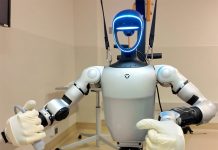
A groundbreaking technique harnessing fat tissue could revolutionize skin regeneration and even hair growth, offering hope for those with facial injuries or hair loss.
Researchers successfully used 3D printing to create layered living skin, including the potential for hair follicles, using fat cells from human tissue.
This innovation holds promise for reconstructive facial surgery and cosmetic treatments.
The study, led by Professor Ibrahim T. Ozbolat from Penn State, published its findings in Bioactive Materials and secured a patent for their bioprinting technology.
Their approach involves extracting fat cells and supporting structures from human tissue, particularly the extracellular matrix that provides stability.
Stem cells obtained from fat tissue were also used to create bioink components for the printing process.
Using a specially designed bioprinter, the team precisely deposited the bioink onto injured sites in rats, aiming to regenerate the hypodermis layer — crucial for wound healing and hair follicle generation. The hypodermis, made of connective tissue and fat, plays a significant role in the skin’s structure and support over the skull.
What sets this study apart is its intraoperative printing capability, meaning the technique could potentially be used during surgery to repair damaged skin immediately.
By printing multiple skin layers, including the hypodermis, the researchers achieved a more comprehensive approach to skin regeneration than previously possible.
The experiments conducted on rats revealed promising results. The co-delivery of fat matrix and stem cells was found to be essential for hypodermal formation, indicating the importance of both components in the printing process.
Additionally, the study observed downgrowths in the hypodermis, suggesting the potential for hair follicle formation.
While fat cells themselves do not directly contribute to hair follicle structure, they play a role in their regulation and maintenance.
The researchers are working to refine the process to control hair follicle density, directionality, and growth, which could have significant implications for hair restoration treatments.
This groundbreaking technique offers hope for more natural-looking facial reconstruction and hair growth treatments in humans.
The ability to precisely grow hair in injured or diseased skin areas could enhance the aesthetic outcomes of reconstructive surgeries, dermatological procedures, and hair transplants.
Moreover, the fully automated bioprinting technology and clinical-grade materials used in this study pave the way for its clinical translation.
With further advancements, this innovative approach could transform the field of skin regeneration and cosmetic surgery, offering patients more effective and aesthetically pleasing outcomes.
The research, supported by the National Institutes of Health and the Scientific and Technological Research Council of Türkiye, represents a significant step forward in the quest for advanced skin regeneration techniques.
Source: Penn State.



